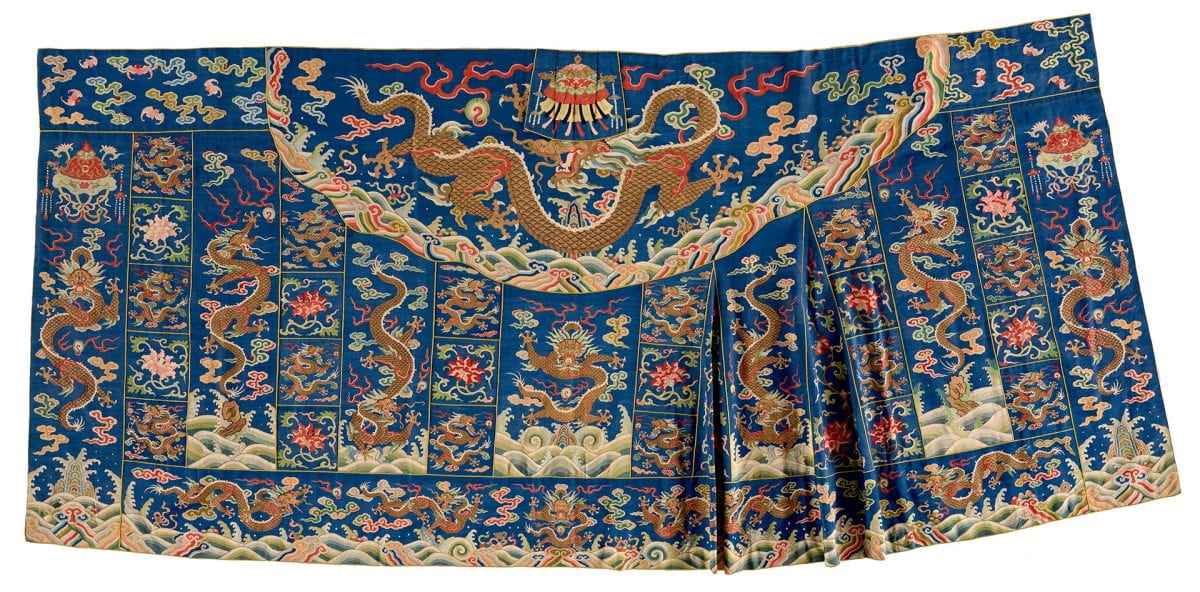In the Buddhist temples of Qing-dynasty China, high-ranking priests presided over lavish religious ceremonies, such as memorial rites for the imperial family. For these special rituals, priests wore “jiasha,” elaborately ornamented robes received upon ordination, which reflected their high status.

Modeled on early Indian robes (kasaya), jiasha were worn over an inner robe and draped over the left shoulder, under the right arm, and then fastened under the left shoulder with ties. The original versions were patchwork – invoking the Buddha’s own robe, which was assembled from discarded fabric bequeathed by his devotes. As single-fabric robes became more acceptable, they were still stitched to resemble patchwork.
This magnificent jiasha was worn by a high-ranking abbot in the 18th century. Created in the imperial silk workshops, it echoes a traditional patchwork construction with 13 inner panels surrounded by five border strips. The blue silk is covered with auspicious Buddhist symbols, waves, cloud forms and a canopy mounted on top to represent the refuge offered by Buddhist teachings.

